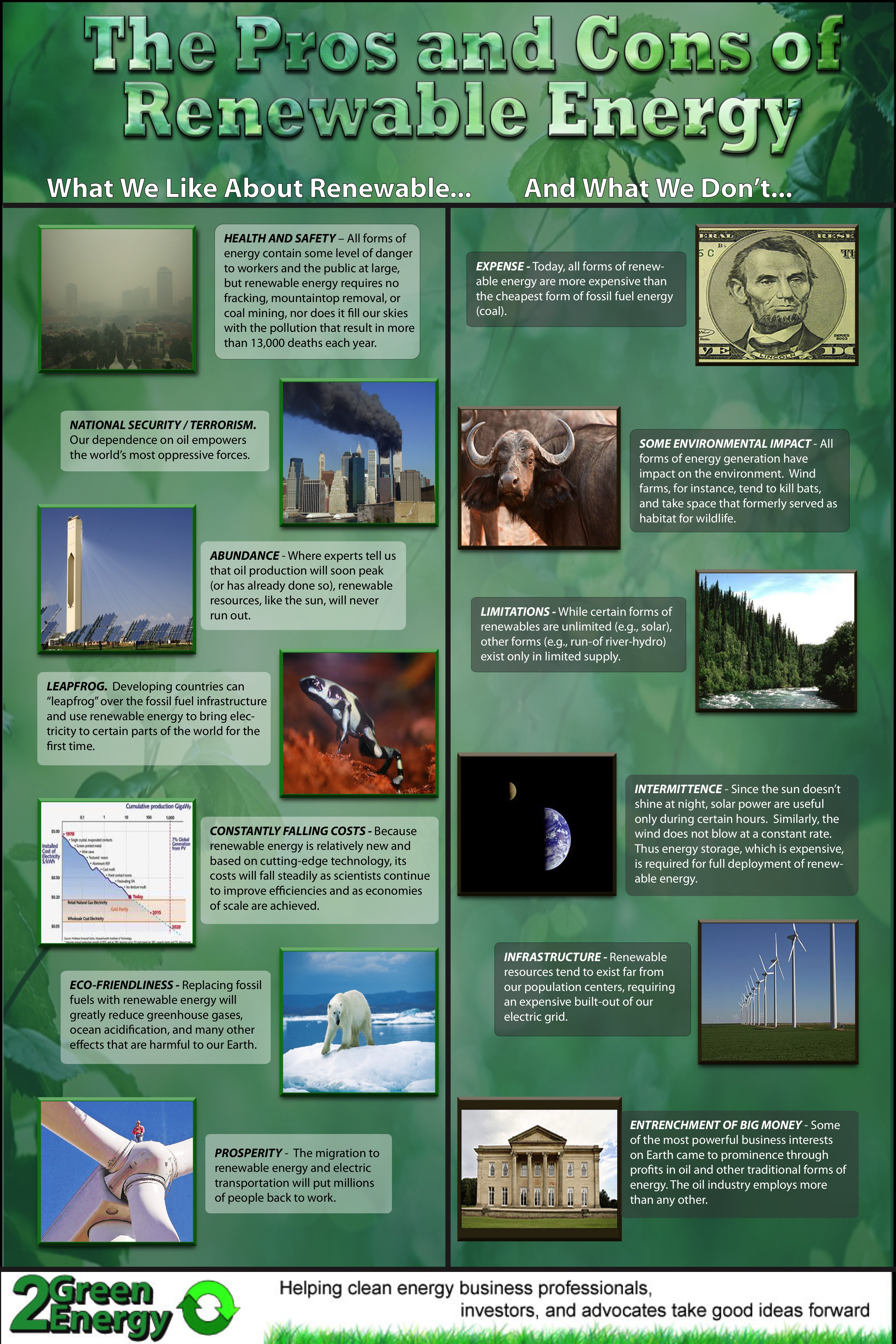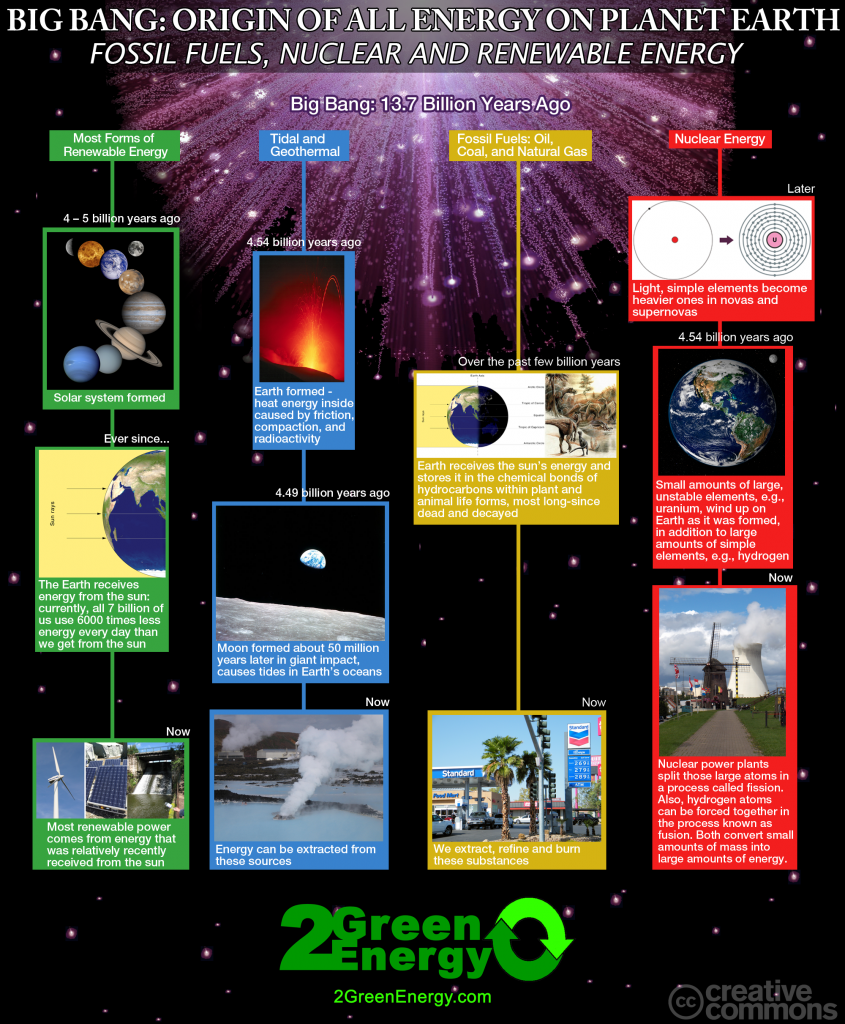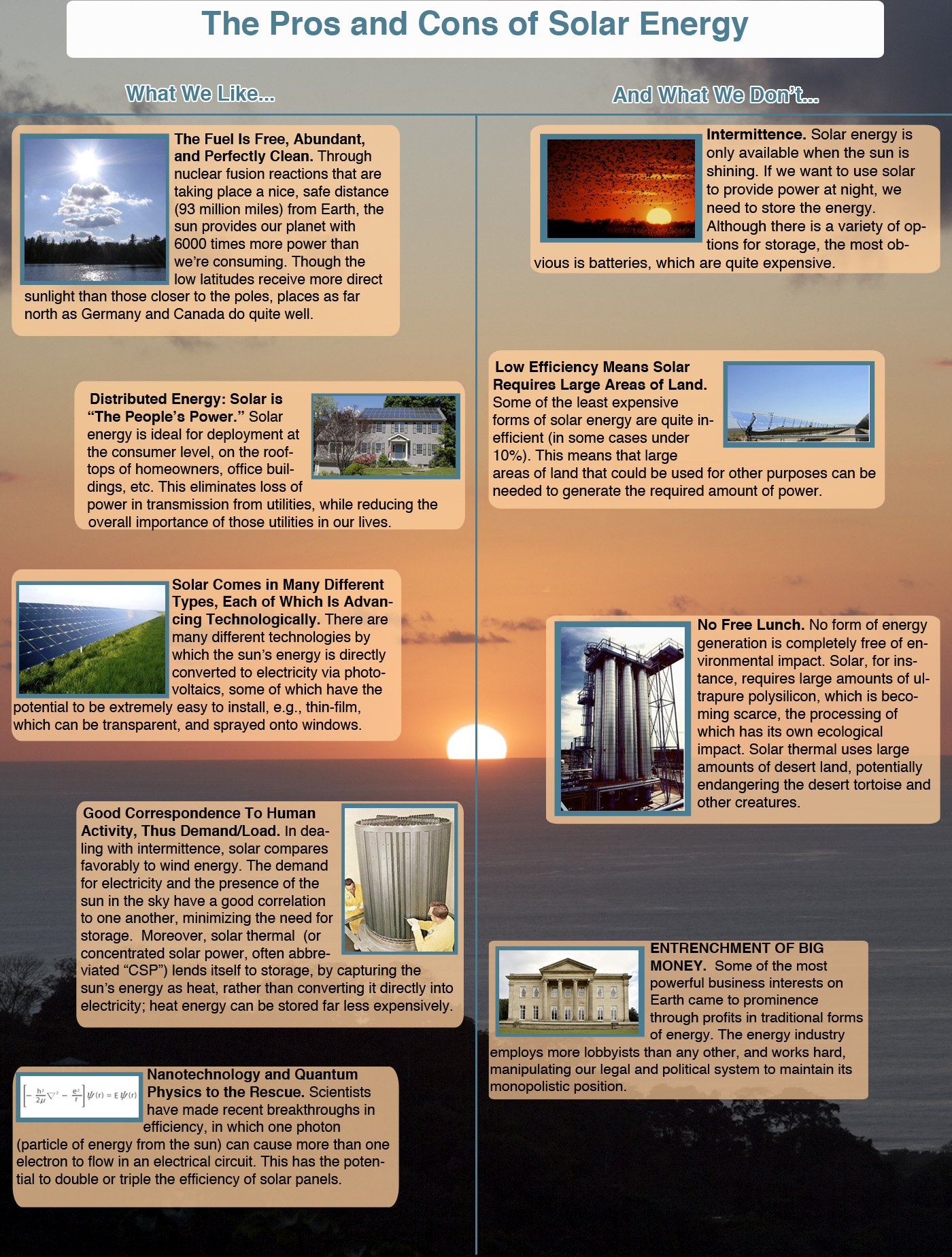Renewable Energy – Basic Concepts
Videos
Infographics
Renewable Energy: Its Strengths and Weaknesses
[youtube http://www.youtube.com/watch?v=Gh4Jslrl-SM&w=560&h=315]
Back to Top
Solar Energy from Photovoltaics
[youtube http://www.youtube.com/watch?v=jImjuQCd6mk&w=560&h=315]
Back to Top
Wind Power
[youtube http://www.youtube.com/watch?v=yQENswF5QQ0&w=560&h=315]
Back to Top
Geothermal Energy
[youtube http://www.youtube.com/watch?v=VYIKdGoQihE&w=560&h=315]
Back to Top
Hydrokinetics
[youtube http://www.youtube.com/watch?v=76e8voDgI6U&w=560&h=315]
Back to Top
Biomass
[youtube http://www.youtube.com/watch?v=_ZdDZuAe6Qc&w=560&h=315]
Back to Top






Reality 2012 is a very different one from the historical period when these techniques were of interest. Sorry to say it but time has run out for most people who work with renewable energy.
Come on the right track as quickly as possible. Each day that passes before this happens the world costs enormous sums that could have been used in a better way.
Development of the grid is wasted. Tomorrow’s energy in the form of power, heat, electricity and hydrogen will be produced anywhere on this earth, at a very low cost.
Solar thermal energy harvesting with molten salt storage and a high-voltage direct current grid… 100 installations across the US Sunbelt, each a mile square, will provide for the entire country’s electricity needs.
With regard to the “threats” to wildlife like the desert tortoise – about half of these installations won’t even be in the desert as they will follow a south-bending line from Southern California to South Carolina. Again, we’re talking about 100 square miles, a single square mile at a time – and only 50 of those in the desert. The Sonoran Desert is an arid region covering 120,000 square miles in southwestern Arizona and southeastern California, as well as most of Baja California and the western half of the state of Sonora, Mexico. The tortoise – if it is actually threatened in those 100 square-mile dots – will survive very nicely on the remaining unused desert.
As far as other species in other areas, this “threat” is simply a red herring that is intended – and used – as a baseless block to badly needed progress. The real and genuine threats, to all life here in the US and across the globe, are the particulates and toxins and climate disruption resulting from our use of fossilized sunlight (not to mention the rabid materialization of the rising specter of ever-escalating global warfare over dwindling and fiercely demanded fossil resources).
The only barrier is not technical or resource-based or even financial. The barrier is merely a gulf of political will on the part of our sock-puppet legislators – a gulf that was dug out, and is maintained, by the wealthy status quo defenders that have purchased our sock-puppets.
Want progress? End bribery!
Truth – Non-Violence – Cooperation – Direct Action – Perseverance
Good points here, but it’s actually about 10K square miles, i.e., 100 miles on a side (if you were building it in one big square, which you wouldn’t).
Here’s a post on the comment I just made: http://2greenenergy.com/solar-thermal-provide/22206/.
Excuse my math skills, CRAIG, which is correct 100 square miles is 100 indivicual instalations each one mile on each side in one place adjacent they would be 10 miles by 10 miles which is 100 square miles as Camerom said not 100×100 for 10,000 like you said. So which way is the correct quote???
You need (about) 10,000 square miles. I.e., if this were a square, it would be 100 miles on a side.